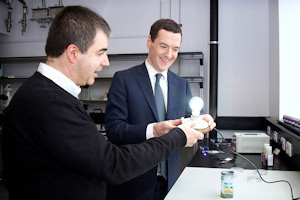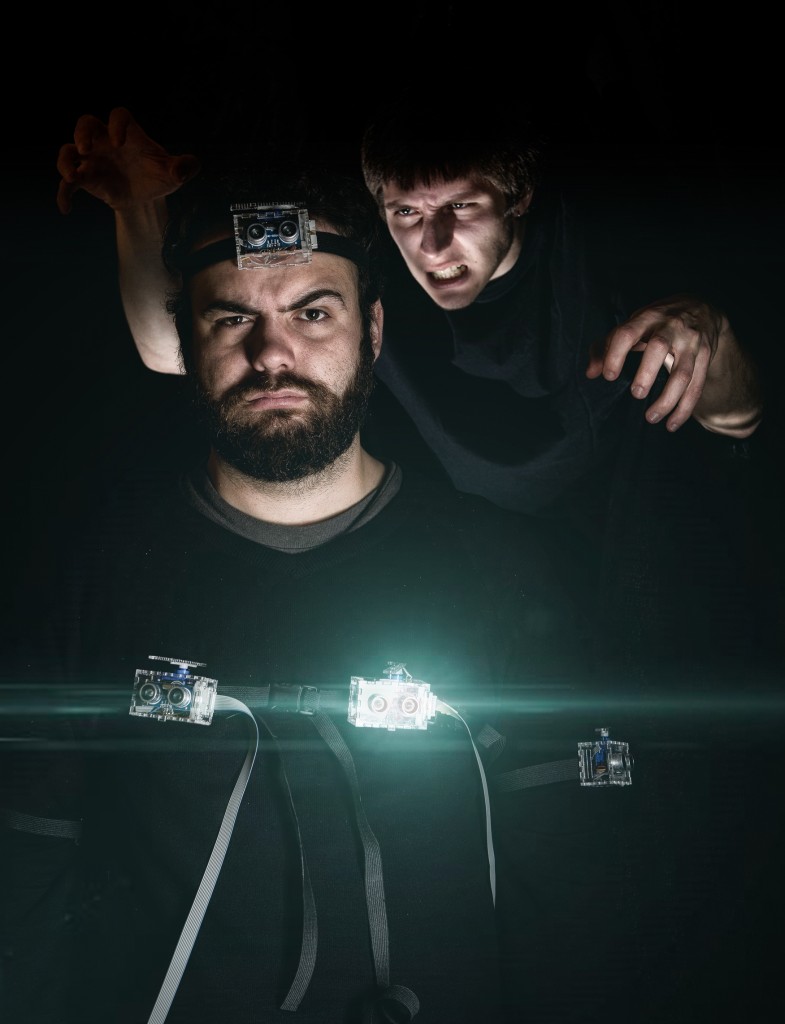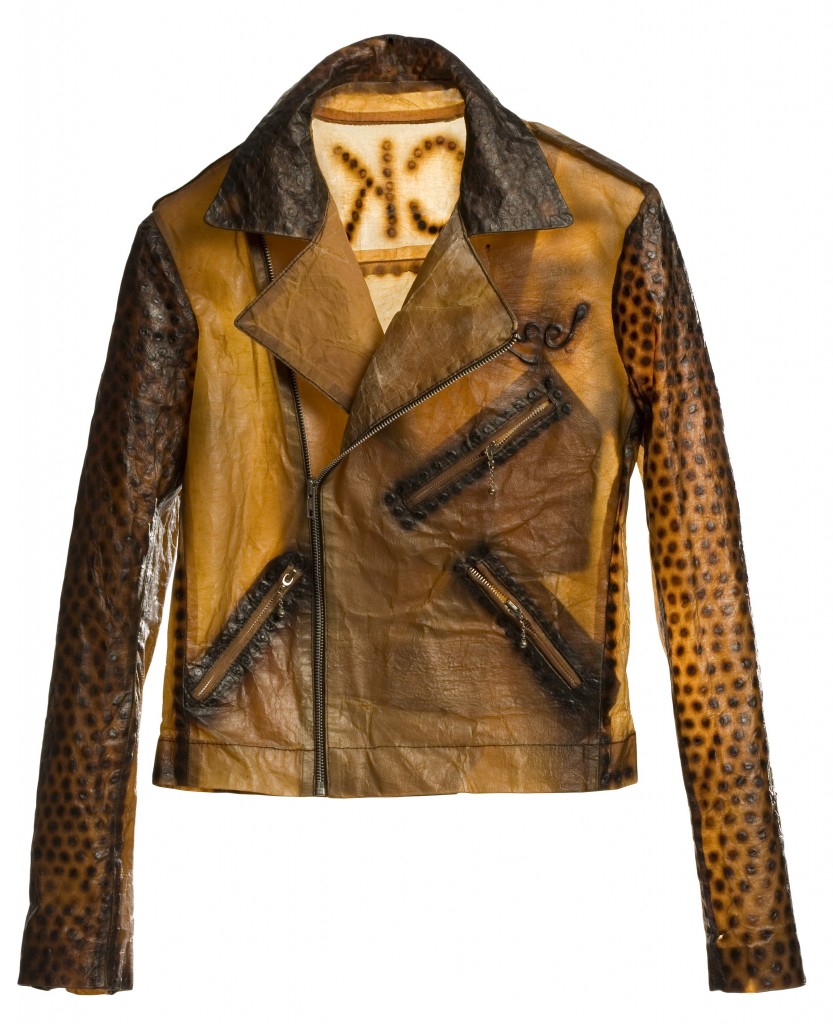I gather people at the University of Manchester are quite happy about the graphene light bulb which their spin-off (or spin-out) company, Graphene Lighting PLC, is due to deliver to the market sometime later in 2015. From a March 30, 2015 news item by Nancy Owano on phys.org (Note: A link has been removed),
The BBC reported on Saturday [March 28, 2015] that a graphene bulb is set for shops, to go on sale this year. UK developers said their graphene bulb will be the first commercially viable consumer product using the super-strong carbon; bulb was developed by a Canadian-financed company, Graphene Lighting, one of whose directors is Prof Colin Bailey at the University of Manchester. [emphasis mine]
I have not been able to track down the Canadian connection mentioned (*never in any detail) in some of the stories. A March 30, 2015 University of Manchester press release makes no mention of Canada or any other country in its announcement (Note: Links have been removed),
A graphene lightbulb with lower energy emissions, longer lifetime and lower manufacturing costs has been launched thanks to a University of Manchester research and innovation partnership.
Graphene Lighting PLC is a spin-out based on a strategic partnership with the National Graphene Institute (NGI) at The University of Manchester to create graphene applications.
The UK-registered company will produce the lightbulb, which is expected to perform significantly better and last longer than traditional LED bulbs.
It is expected that the graphene lightbulbs will be on the shelves in a matter of months, at a competitive cost.
The University of Manchester has a stake in Graphene Lighting PLC to ensure that the University benefits from commercial applications coming out of the NGI.
The graphene lightbulb is believed to be the first commercial application of graphene to emerge from the UK, and is the first application from the £61m NGI, which only opened last week.
Graphene was isolated at The University of Manchester in 2004 by Sir Andre Geim and Sir Kostya Novoselov, earning them the Nobel prize for Physics in 2010. The University is the home of graphene, with more than 200 researchers and an unrivalled breadth of graphene and 2D material research projects.
The NGI will see academic and commercial partners working side by side on graphene applications of the future. It is funded by £38m from the Engineering and Physical Sciences Research Council (EPSRC) and £23m from the European Regional Development Fund (ERDF).
There are currently more than 35 companies partnering with the NGI. In 2017, the University will open the Graphene Engineering Innovation Centre (GEIC), which will accelerate the process of bringing products to market.
Professor Colin Bailey, Deputy President and Deputy Vice-Chancellor of The University of Manchester said: “This lightbulb shows that graphene products are becoming a reality, just a little more than a decade after it was first isolated – a very short time in scientific terms.
“This is just the start. Our partners are looking at a range of exciting applications, all of which started right here in Manchester. It is very exciting that the NGI has launched its first product despite barely opening its doors yet.”
James Baker, Graphene Business Director, added: “The graphene lightbulb is proof of how partnering with the NGI can deliver real-life products which could be used by millions of people.
“This shows how The University of Manchester is leading the way not only in world-class graphene research but in commercialisation as well.”

Chancellor George Osborne and Sir Kostya Novoselov with the graphene lightbulb Courtesy: University of Manchester
This graphene light bulb announcement comes on the heels of the university’s official opening of its National Graphene Institute mentioned here in a March 26, 2015 post.
Getting back to graphene and light bulbs, Judy Lin in a March 30, 2015 post on LEDinside.com offers some details such as proposed pricing and more,
These new bulbs will be priced at GBP 15 (US $22.23) each.
…
The dimmable bulb incorporates a filament-shaped LED coated in graphene, which was designed by Manchester University, where the strong carbon material was first discovered.
$22 seems like an expensive light bulb but my opinion could change depending on how long it lasts. ‘Longer lasting’ (and other variants of the term) seen in the news stories and press release are not meaningful to me. Perhaps someone could specify how many hours and under what conditions?
* ‘but’ removed as it was unnecessary, April 3, 2015.
ETA April 3, 2105: Dexter Johnson has provided a thought-provoking commentary about this graphene light bulb in an April 2, 2015 post on his Nanoclast blog (on the IEEE [Institute for Electrical and Electronics Engineers] website), Note: Links have been removed,
The big story this week in graphene, after taking into account the discovery of “grapene,” [Dexter’s April Fool’s Day joke posting] has to be the furor that has surrounded news that a graphene-coated light bulb was to be the “first commercially viable consumer product” using graphene.
Since the product is not expected to be on store shelves until next year, “commercially viable” is both a good hedge and somewhat short on meaning. The list of companies with a commercially viable graphene-based product is substantial, graphene-based conductive inks and graphene-based lithium-ion anodes come immediately to mind. Even that list neglects products that are already commercially available, never mind “viable”, like Head’s graphene-based tennis racquets.
Dexter goes on to ask more pointed questions and shares the answers he got from Daniel Cochlin, the graphene communications and marketing manager at the University of Manchester. I confess I got caught up in the hype. It’s always good to have someone bringing things back down to earth. Thank you Dexter!

